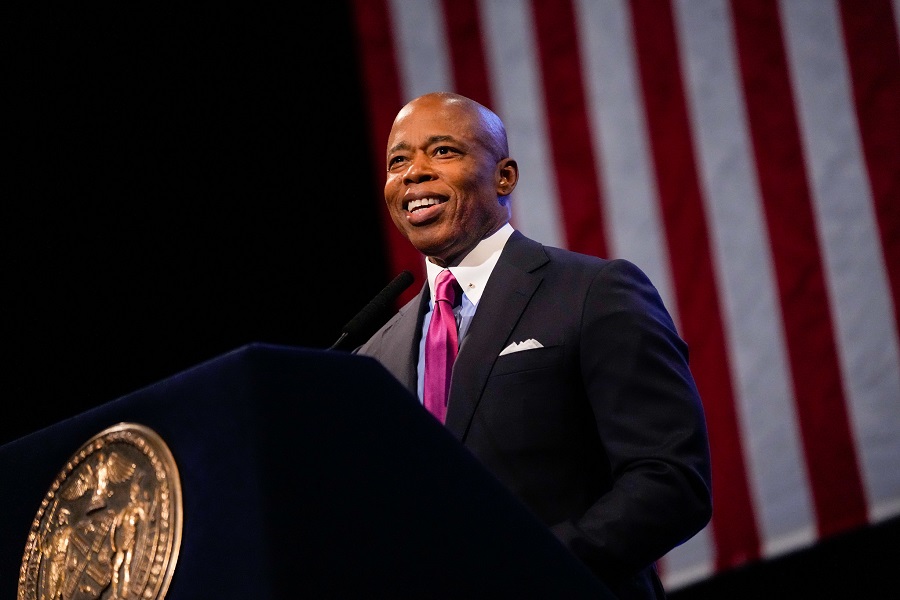By Richard Daub
This is part one in a six part series, the remaining five posts will follow every other week for the next two months.
They pass by every half-hour right outside my apartment window. The double-decker buses loaded with tourists rolling down Broadway and past our building on West 133rd before swinging a right on 131st on their way to Madame Alexander’s Doll Factory, the second biggest tourist attraction in Harlem after the Apollo Theater.
Say what?
Yes, it is true. Madame Alexander has teamed up with Gray Line New York Sightseeing to have those big buses swing through the smattering of auto body shops and Nick Sprayregan’s self-storage empire to drop tourists from all over the world right at her front door. They apparently get a free gift of some sort, and then perhaps a bite to eat at Studebaker’s Café right next door while they wait to hop on the next bus.
Amazingly, this is one of the only businesses in Harlem besides the Apollo Theater that is even making an honest effort to capture the billions of tourist dollars spent in New York City each year. According to NYC & Company (the official marketing and tourism arm of the City of New York whose mission it is “to maximize travel and tourism opportunities throughout the five boroughs, build economic prosperity and spread the dynamic image of New York City around the world”), over 45 million people visited New York City in 2009. These visitors spent a whopping $28 billion in the midst of the worst economy since the Great Depression (they spent $32 billion in 2008), and by 2012, NYC & Company hopes to have 50 million tourists visiting the city annually.
“We really have done a good job in attracting people,” Mayor Bloomberg said of these statistics.
These are staggering numbers—but where are these tourists spending this $28 billion? Of course, most of it is spent Downtown and Midtown Manhattan, where people are willing to wait on line for five hours to visit the Statue of Liberty and then spend over $20 for a cheeseburger at T.G.I. Friday’s and $36 for a martini at a cocktail lounge. Because of the Empire State Building, the Statue of Liberty, and most recently Ground Zero, tourists will always first be drawn to Downtown and Midtown. But then what? Are they spending any of this $28 billion in Harlem? And what are Harlem’s local business owners doing to attract more visitors and grab a slice of this lucrative economic pie?
I didn’t even realize that I lived right around the block from Harlem’s second biggest tourist attraction until I spoke to David Chien, the Director of Marketing for Gray Line New York and City Sights NY (the two companies are former rivals but are now a joint venture—the “red buses” being Gray Line, and the “blue buses” being City Sights). He told me that over a million customers per year take their tours and trust them to show them only the best of what New York City has to offer. Many of these visitors will only go where these buses take them, making them very influential as to where tourist money is spent in the city and what specific businesses are the beneficiaries.
“I think a lot of people visiting New York City are confused as to where is the one stop they could find everything, and that is basically Gray Line or New York Sightseeing,” David told me. “We sell all attraction tickets, there are maps and information that will help guide your visit for the first time or for the second time to make things easier for you. New York City is intimidating—we take that for granted because we’re here every day. But to come to the big city, some of them need that familiar place where you can say, ‘Listen, I trust you, and I will go there if this is where you will go.’ Otherwise, they’re not going to go. A lot of people can’t find the comfort in venturing out to a borough or a street if we’re not the connector.”
This is particularly true of visitors from abroad, many of whom are visiting the United States for the first time. But even for domestic visitors, New York City is nothing like the towns they come from, so it can be overwhelming and even a bit frightening. And, while many of these visitors may really want to see a neighborhood such as Harlem, many are not willing to simply jump on the A train to 125th Street and start exploring on their own. They want someone to show them around and to point them to the interesting sites and tell them where to go, which, again, makes these tours very influential in their impact local neighborhood economies.
“There may be an apprehensiveness of someone who may have the misnomer of what Harlem is all about,” David said. “We’ve got to give them the comfort zone. If someone who hasn’t visited New York City in fifteen years, they would be shocked if they saw 42nd Street. And that is my point about not only Harlem, but all of New York City. It’s probably the safest big city in the entire world, so how do we give them this hand to say, ‘Visit us! You’re going to have such a great time, and here’s the starting point.’ I think that should be considered when also introducing Harlem. Let’s have a point there where everybody can come and visit this great neighborhood. Right now that starting point is just a bus stop. Right now all I have a bus stop in Harlem.”
To be continued….
Become a Harlem Insider!
By submitting this form, you are consenting to receive marketing emails from: . You can revoke your consent to receive emails at any time by using the SafeUnsubscribe® link, found at the bottom of every email. Emails are serviced by Constant Contact



















